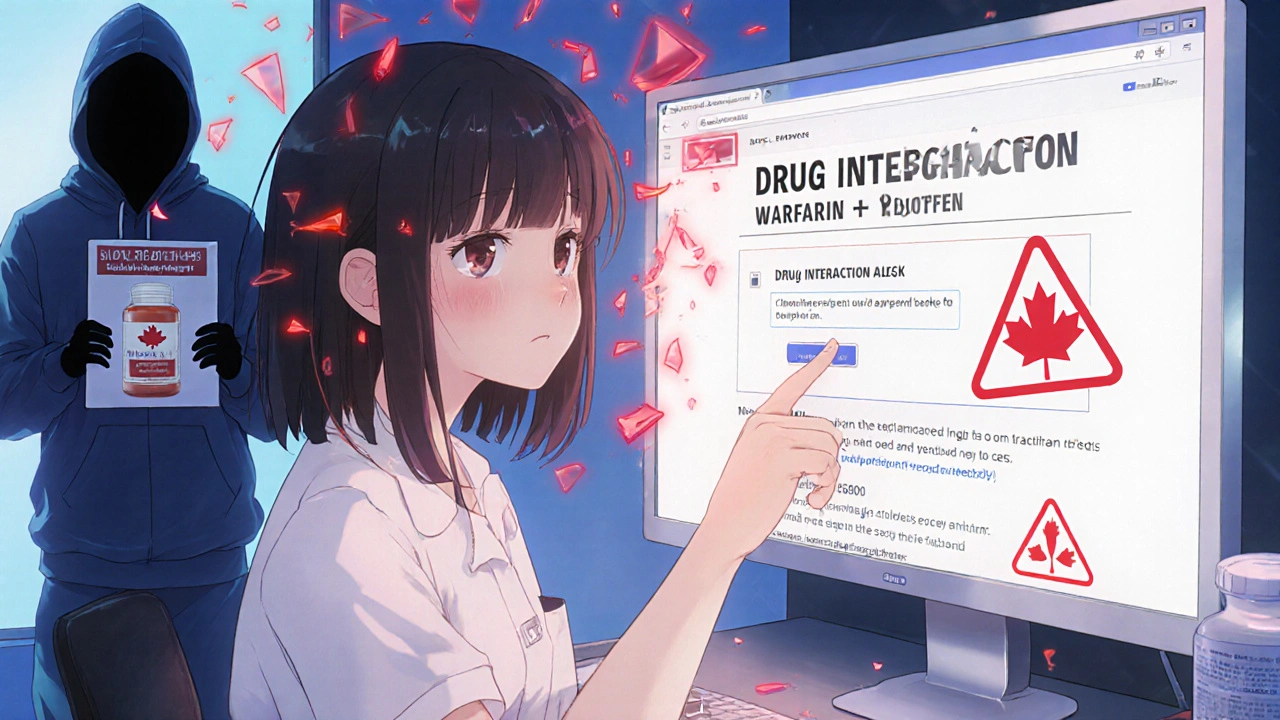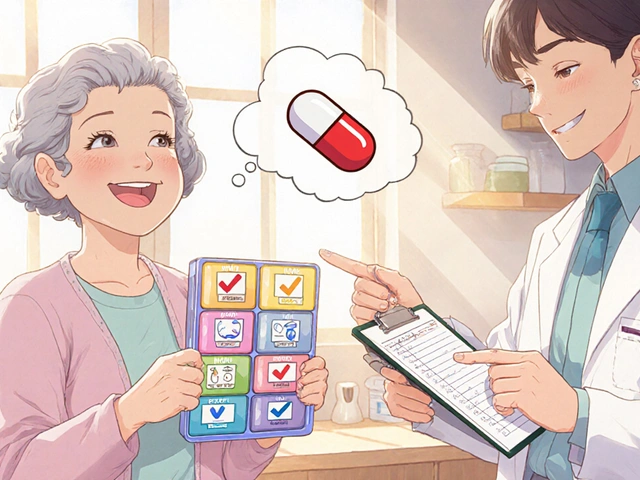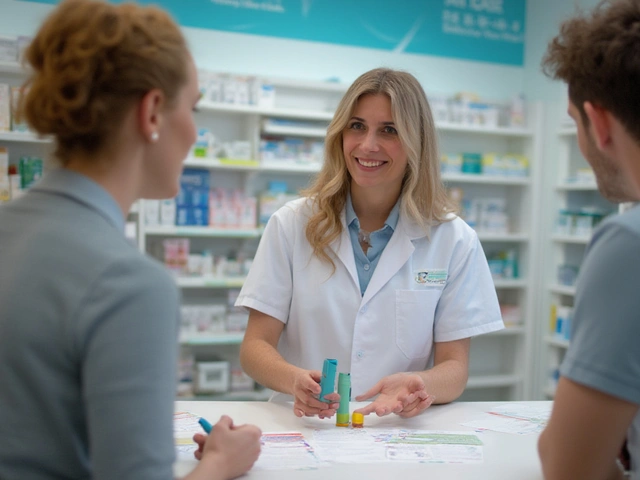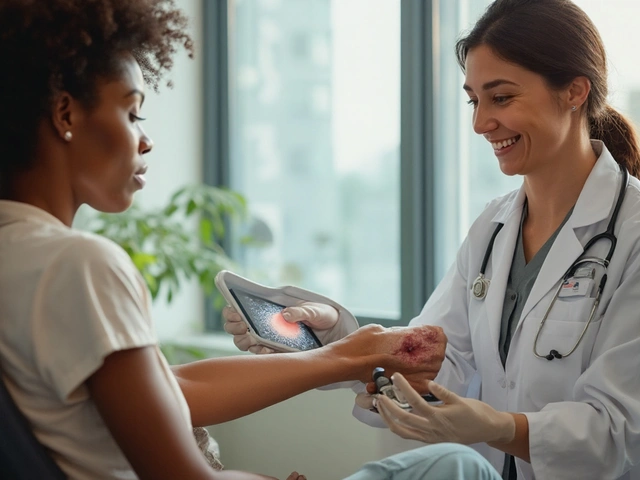Every year, over 1.5 million Americans are harmed by medication errors. That’s not a typo. These aren’t rare accidents-they’re preventable mistakes happening in hospitals, pharmacies, and right inside your kitchen cabinet. And it’s not just older adults. People on five or more medications are 30% more likely to make a mistake. If you or someone you care for is managing pills daily, this isn’t theoretical. It’s real. And it’s fixable.
What Counts as a Medication Error?
A medication error isn’t just taking the wrong pill. It’s any mistake that happens from the moment a drug is prescribed to when it’s taken. That includes:- Getting the wrong drug or dose
- Taking a pill at the wrong time
- Missing a dose entirely
- Taking two drugs that clash dangerously
- Using expired or fake medication bought online
How Hospitals Are Fighting Back (And Where They’re Still Failing)
Hospitals have tools that should make mistakes rare-but they don’t always work the way they should. Barcode Medication Administration (BCMA) is one of the most effective tools. Nurses scan a patient’s wristband and the drug’s barcode before giving any pill. A 2025 study showed it cut dispensing errors by nearly 44%. Wrong drug errors dropped by over 56%. Wrong doses? Down 43%. Dose omissions? Cut in half. But here’s the catch: it’s not magic. Nurses in a 500-bed hospital reported that scanning adds 15 to 20 minutes to each medication round. The constant beeping? It’s exhausting. And when staff get tired, they start bypassing the system-scanning multiple pills at once, skipping checks, or using fake barcodes. That’s how new errors creep in. One study found 57% of pharmacists saw new types of mistakes emerge after BCMA was installed. Computerized Prescribing (CPOE) helps too. Instead of handwritten scripts, doctors type orders into a system. If a dose is too high or a drug clashes with another, the system warns them. Studies show this cuts errors by at least half. But too many warnings? Clinicians start ignoring them. One 2024 study found 42% of doctors and nurses just click past alerts without reading them. Medication reconciliation is another key tool. It means comparing every drug a patient takes-prescriptions, over-the-counter pills, supplements-when they move from one care setting to another (like from home to hospital or hospital to rehab). When pharmacists do this right, it cuts adverse events by up to 50%. But here’s the problem: most hospitals do it poorly at discharge. Patients leave with a list that’s outdated, incomplete, or just plain wrong.What You Can Do at Home (No Tech Required)
Hospitals have scanners and alerts. You have a pill organizer and a phone. But you can still stop errors before they happen. Use single-dose packaging. If you take eight pills a day, getting them in blister packs-each day’s dose sealed in its own pocket-cuts errors by 28%. Ask your pharmacist. Many offer this for free or low cost. Keep a real-time medication list. Not a mental list. Not a scribbled note on a napkin. Write down every pill, vitamin, and supplement you take. Include the dose and time. Update it every time your doctor changes something. Show this list to every provider you see-even the dentist. Use a pill organizer with alarms. Simple ones work best. Avoid those with 28 compartments if you’re confused easily. A four-compartment box (morning, noon, evening, bedtime) is clearer. Pair it with a phone alarm labeled “Take Lisinopril.” Get a weekly check-in with your pharmacist. A 2023 study found that elderly patients who met with a pharmacist once a week to review their meds cut their home errors by 37%. Pharmacists spot interactions, expired drugs, and duplicate prescriptions you might miss. Never take meds from unverified websites. The WHO says 95% of online pharmacies selling prescription drugs are illegal. Many fake sites use “Canada” in their name or a maple leaf logo to look legit. But they sell fake, expired, or dangerous pills. Only use pharmacies you know, or those certified by the National Association of Boards of Pharmacy (NABP).
Who’s at Highest Risk?
Not everyone is equally likely to make a mistake. These groups need extra attention:- People 75+ - 38% higher risk of error
- People on five or more medications - 30% higher risk
- Those with memory issues or vision problems
- Patients recently discharged from hospital - this is the most dangerous transition
The Hidden Danger: Fake and Substandard Drugs
You might think fake meds are a problem only in developing countries. But they’re here too. The WHO warns that counterfeit drugs are flooding the market-especially online. These aren’t just ineffective. They can be deadly. A 2024 FDA report found that over 62% of severe medication errors involve high-risk drugs: insulin, blood thinners like warfarin, and opioids like oxycodone. If you’re on one of these, double-check every bottle. Look for tampering. Compare the pill color and shape to your last fill. If it looks different, call your pharmacy. Don’t assume it’s a batch change.
What’s Next? AI and Blockchain Are Coming
The future of medication safety isn’t just about scanning barcodes. It’s about prediction. Johns Hopkins tested an AI system that watches for risky prescriptions before they’re written. In 2024 trials, it cut dangerous prescribing errors by 53%. The system flagged things like a patient on two blood thinners or a kidney patient getting a drug that could damage their kidneys. Blockchain is being tested to track every pill from manufacturer to patient. If a bottle’s barcode is scanned at the pharmacy, the system checks it against the original factory seal. This could stop fake drugs before they reach your shelf. But here’s the truth: technology won’t fix this alone. ECRI’s 2025 report says 68% of BCMA failures happen because staff weren’t trained right-or the system didn’t fit into how nurses actually work. The same goes for home use. A pill organizer won’t help if no one checks it. An alert won’t matter if you’re used to ignoring it.The Bottom Line: You’re Part of the Solution
Medication safety isn’t just the hospital’s job. It’s yours too. You don’t need fancy tech. You need:- A clear, updated list of every medication you take
- Single-dose packaging when possible
- A weekly check-in with your pharmacist
- Never trusting online pharmacies without verification
- Asking: “What is this for? What happens if I miss it? What if I take too much?”
What’s the most common cause of medication errors at home?
The most common cause is confusion over timing and dosage, especially for people taking five or more medications. Studies show 41% of home errors involve taking pills at the wrong time, and 33% involve taking too much or too little. This is especially true for seniors with memory issues or poor eyesight. Using a pill organizer with alarms and a written medication list can cut these errors significantly.
Can barcode scanning systems really prevent medication errors in hospitals?
Yes, but only if used correctly. A 2025 study found barcode scanning reduced dispensing errors by 44%, with specific drops of 57% for wrong drugs and 67% for missed doses. However, if staff are overworked or poorly trained, they may bypass the system-leading to new types of errors. The technology works best when paired with strong training and workflow redesign, not just as a checkbox.
How can I tell if an online pharmacy is safe?
Look for the VIPPS seal (Verified Internet Pharmacy Practice Sites) from the National Association of Boards of Pharmacy. Avoid sites that sell prescription drugs without a valid prescription, offer “miracle cures,” or use fake Canadian branding like maple leaves or .ca domains. If the price seems too good to be true, it probably is. The WHO says 95% of online pharmacies selling prescription drugs are illegal.
Why is medication reconciliation so important during hospital discharge?
When you leave the hospital, your medication list often changes. But many hospitals fail to update it properly before discharge. Studies show patients often go home with outdated, incomplete, or conflicting instructions. This leads to dangerous errors like taking two drugs that interact or missing a critical dose. A pharmacist-led reconciliation-where all your meds are reviewed side-by-side-cuts adverse events by up to 50%.
Should I ask my pharmacist to review my meds regularly?
Absolutely. A 2023 study found that elderly patients who met with a pharmacist once a week to review their medications reduced home errors by 37%. Pharmacists catch drug interactions, duplicate prescriptions, expired meds, and dosing issues doctors might overlook. Most pharmacies offer this service for free-ask for a “medication therapy review.”
What are high-alert medications, and why do they matter?
High-alert medications are drugs that can cause serious harm if used incorrectly. These include insulin, blood thinners (like warfarin), opioids (like oxycodone), and IV potassium. They account for 62% of severe medication errors, according to the FDA. Even small mistakes-like a wrong dose or missed monitoring-can lead to death. Always double-check these medications, and ask your provider to explain the risks.








